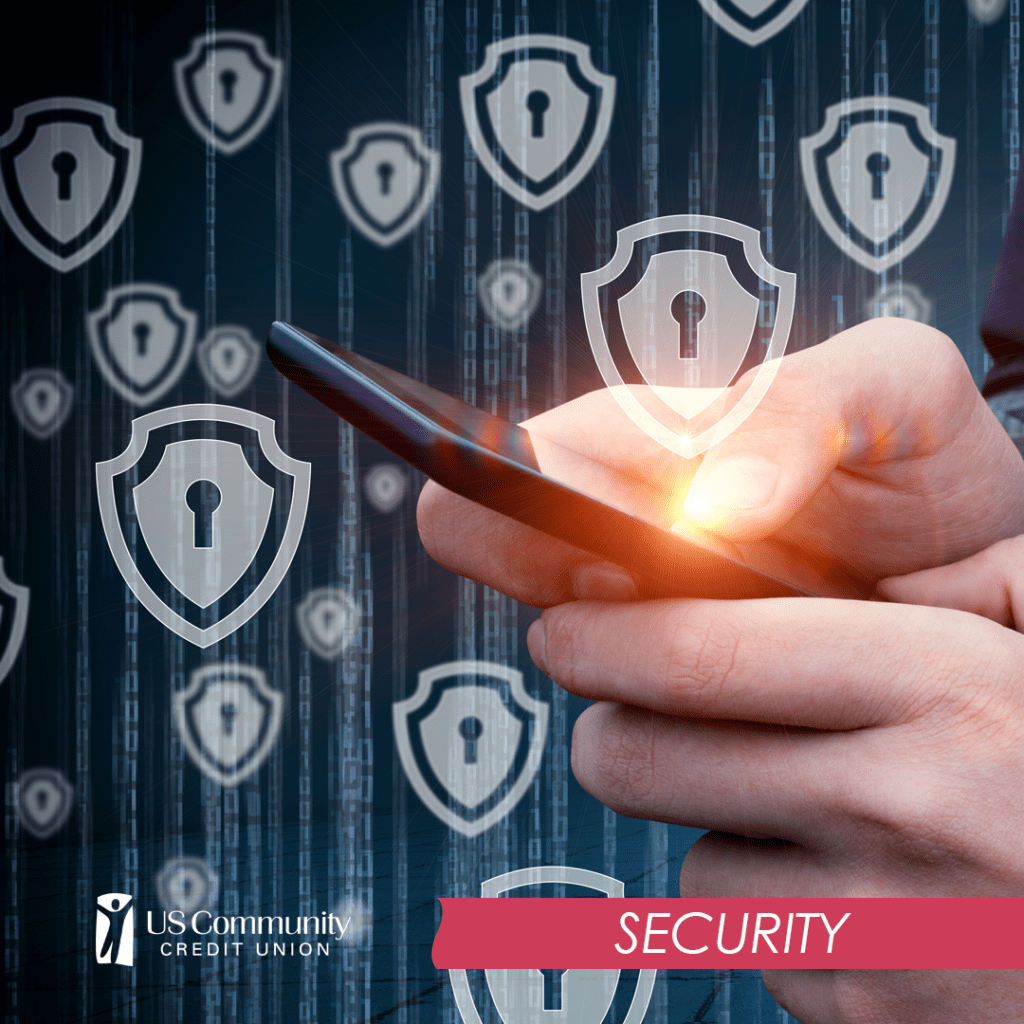
Did you know there were 14.4 million victims of identity theft in 2018? According to Javelin Strategy, each case cost the victim an average of $1,050 — and that’s only the cost in dollars.
When an individual’s identity is stolen, the thief wreaks major havoc on the victim’s financial health, which can take months, or even years, to recover from.
As your trusted financial partner, your identity protection is our highest priority. That’s why US Community Credit Union is offering each of our members IDProtect, an active identity theft protection service. Other companies and financial institutions charge anywhere from $5-$10 a month for this type of service and protection, but USCCU ensures this protection is affordable.
For a low monthly security fee of $2.95, you and your family receive all the security benefits offered through IDProtect, such as credit file monitoring, total identity monitoring, credit score monitoring, up to $10,000 in identity theft reimbursement coverage and access to a dedicated fraud specialist. (Complete list of benefits located here).
There are also steps you can take to prevent yourself from becoming the next victim. US Community Credit Union has put together a list of suggestions to help protect YOU!
8 Steps To Help Keep You Protected From Identity Theft
1. Monitor your credit
Check your score for any sudden hits and look through your reports for suspicious activity. IDProtect will be monitoring your credit score as well, letting you know if it appears in any searches, but it’s a good idea for you to also take a peek at it from time to time.
We recommend you review your monthly credit card bills for any charges you don’t remember making as well.
2. Use multi-factor authentication
When banking online, or using any other service that utilizes sensitive information, always choose multi-factor authentication. If possible, use your thumbprint or FaceID as one means of identification. Otherwise, use multiple passwords, PINs or personal questions to make it difficult for a hacker to break into your accounts.
3. Use strong unique passwords
Never use identical passwords for multiple accounts. If you do so, you’re making yourself an easier target for identity thieves. Instead, create strong, unique passwords for every account you use. The strongest passwords use a variety of letters, symbols and numbers, and are never mock-ups or replicas of popular phrases or words.
If you find it difficult to remember multiple passwords, consider using a free password service, like LastPass. You’ll only need to remember one master password and the service will safely store the rest.
4. Only use Wi-Fi with a VPN
Did you know you are putting your personal information at risk every time you use the free Wi-Fi at your neighborhood coffee shop (or any other public establishment)? When using public Wi-Fi, always choose a Virtual Private Network (VPN) instead of your default Wi-Fi settings to keep the sensitive information on your device secure.
5. Block robocalls
Lots of identity theft occurs via robocalls in which the scammer impersonates a government official or the representative of a well-known company. Lower the number of robocalls reaching your home by adding your home number to the Federal Trade Commission’s No Call List at donotcall.gov. It’s also a good practice to ignore all calls from unfamiliar numbers, because each engagement encourages the scammers to try again.
6. Upgrade your devices
Whenever possible, upgrade the operating system of your computer, tablet and phone to the latest versions. Upgraded systems will keep you safe from the most recent security breaches and offer you the best protection against viruses and hacks.
7. Shred old documents
While most modern-day identity theft is implemented over the internet or through phone calls, lots of criminals still use old-fashioned means to get the information they need. Dumpster-divers will paw through trashed papers until they hit upon a missive that contains personal information. It’s best to shred all documents containing sensitive information as soon as you don’t need them.
8. Keep personal information personal
Be super-cautious about sharing sensitive data, like your Social Security number and financial institution PINs, with strangers — and even with friends. It’s also a good idea to use the strongest, most private security settings on your social media accounts to keep hackers out.
Identity theft can be an expensive nightmare, and USCCU feels each member needs identity theft protection. Be proactive about protecting your identity and keep your information and your money safe.
SOURCES:
https://www.safesmartliving.com/identity-theft/
https://www.wisebread.com/the-comprehensive-guide-to-identity-theft-everything-you-need-to-know
https://centsai.com/ultimate-guides/protecting-against-identity-theft/